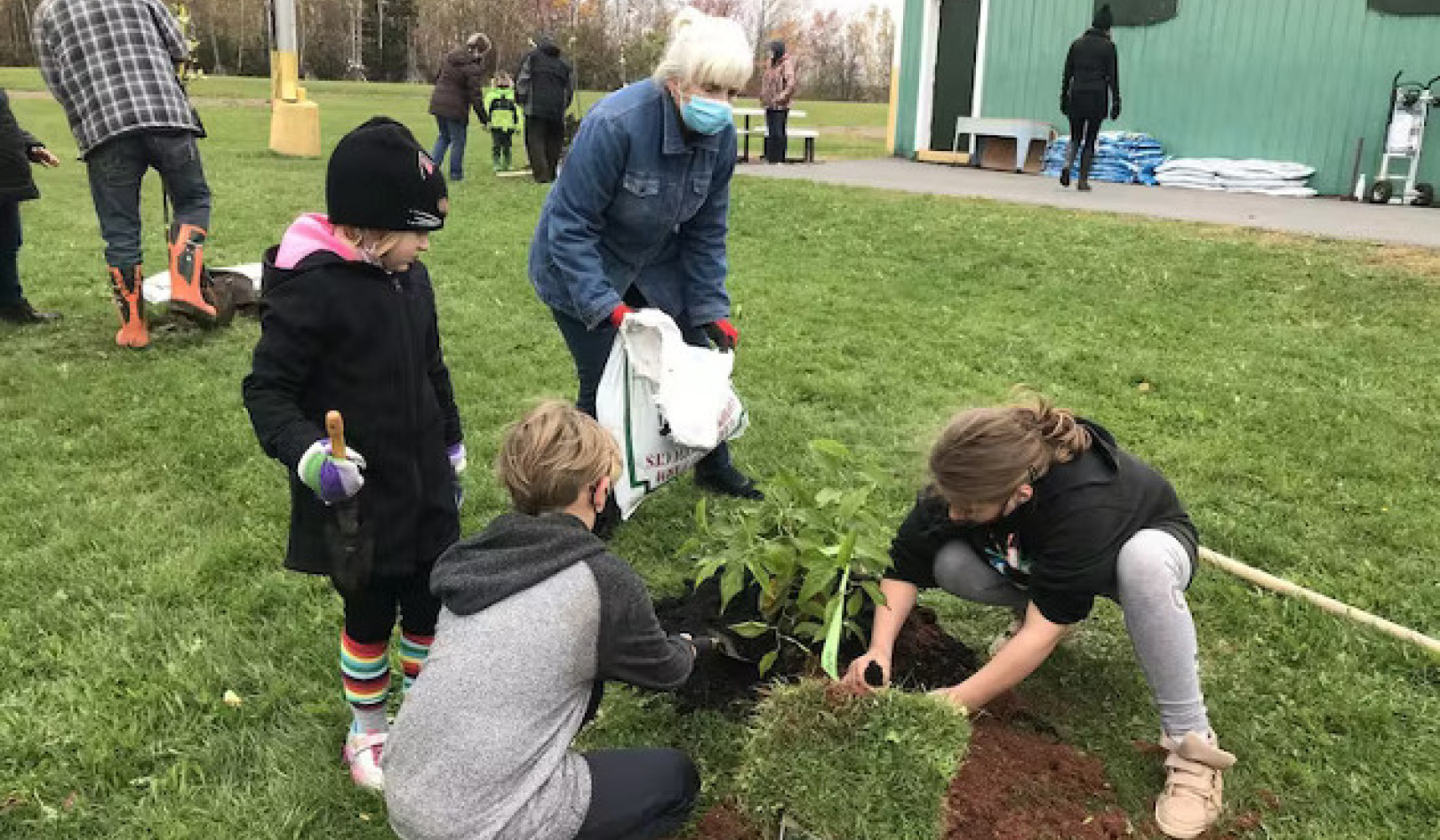
If you’re an entrepreneurial spirit, you might have already noticed a need that could be met by sharing in your community. If you live in a place where collaborative consumption is just catching on (or maybe unheard of), it might be better to try an established online community that can help you learn the ropes.
Either way, taking the first step is important and likely to be life changing without really requiring you to drastically change your life. The metamorphosis is more a shift in thinking than anything else. Here’s the awesome thing about living a simpler, cheaper, more sustainable lifestyle through sharing: it’s free. Unlike putting solar panels on your house or buying a hybrid, there is no investment required to start sharing. You don’t need to take a class, attend a workshop, or get a permit to start sharing (although sometimes these things can be helpful for really big shares).
Collaborative consumption requires only things that you already have and people you already know (or are willing to meet). If you’re able to make a phone call, attend a Meetup, organize a get-together, or conduct a Google search, you’ve got all the know-how that’s needed to reduce waste, conserve resources, and connect with other people who are also striving for a low-impact life.
Peer-to-Peer Sharing
Informal, local collaborative consumption is often called peer-to-peer (P2P) sharing. As the name suggests, this style of sharing is conducted for and by peers. Just about any type of sharing service can be executed at the peer-to-peer level. In fact, some people think that this is the purest and most powerful style of sharing.
P2P sharing is all about people sharing resources to meet each other’s needs. It’s yet another way that regular people can opt out of a system that doesn’t fit their lifestyle or personal goals. Peer-to-peer sharing often (but not always) means the people involved get to make up the rules about how things will work, so solutions can be customized to the community they are meant to serve, rather than employing a one-size-fits-all attitude.
In P2P schemes, the shared resource (time, things, experiences) is usually exchanged during a direct encounter with another person or group of people. This is different from collaborative consumption businesses like coworking or Zipcar, where the thing that’s shared is owned by a single person or part of a managed fleet owned by a business entity.
P2P sharing can also mean that people pool their resources together to create something that can then be shared with a larger community. Examples would be a church group that builds a tool sharing library, or neighbors building a community garden. Most of the time, peer-to-peer sharing takes place in the communities where members live, work, or play in close proximity to one another, but face-to-face interaction isn’t a requirement for P2P sharing. In fact, some of the most successful P2P ventures are those that allow complete strangers to barter, rent, or trade with each other. It’s probable that there are plenty of examples of P2P sharing happening right now in your community; you just haven’t recognized them as collaborative consumption.
Perhaps there is a group of people who all work for the same company, and they figure out that they all live on the same side of town. Instead of all fighting the traffic individually in otherwise empty cars, the coworkers decide to carpool. Each day of the week, it’s another person’s turn to pick up the others and drive to and from work. This splits the cost and decreases each person’s individual carbon footprint just a little bit. In addition, they have the pleasure of each other’s company and a full car along the way. This is peer-to-peer sharing.
When I was still in high school, my mother belonged to a food co-op. Instead of being run out of a storefront, this co-op was simply made up of a few savvy neighbors who realized that they could pool their buying power to make healthy foods more accessible. Once or twice a month, these families would select their goods out of a natural foods distribution catalog. There was no cost for membership, and deliveries were made to the house of the organizing family. When deliveries arrived, individuals volunteered to help unload the truck and sort the goods into piles that represented each family’s order. As long as there were enough people interested and the orders were of a high enough dollar amount to make it worth the delivery company’s time, the pop-up co-op provided a more convenient, affordable way for families to eat well. This is peer-to-peer sharing.
A few years ago, a woman who worked at my coworking space decided that her huge yard was going to waste. She already had a garden, but it only took up a small portion of the space that was available. She talked to a few friends and neighbors and found that many of them wished there was an affordable CSA (Community Supported Agriculture) within biking or walking distance. As my friend discovered, these people were more than willing to come and help her turn over new sections of her yard so that the growing capacity could be increased. All they wanted was a share of the harvest. Thus, a tiny hyper-local CSA was born. This is peer-to-peer sharing.
The cool thing about these examples is that, at the time, no one involved realized that they were peer-to-peer sharing. They were just clever people who realized that, by coming together, they could solve their problems in an efficient manner — and probably have some good times along the way. That’s why P2P sharing is the easiest way to experiment with the sharing economy.
Online P2P
The caveat of P2P sharing is that it requires, well, peers. People living in remote communities or in areas where sharing is still a foreign concept might find it hard to engage in this kind of sharing. But even a lack of interested friends or urban density doesn’t have to keep you from sharing. The explosion of online social networking over the past few years means that communities can form among people who live far away from each other, and perhaps will never even meet. Online sharing services make it possible to swap, barter, and learn from people living thousands of miles away from you, even in other countries. These online services and marketplaces can be a great way to experiment with relatively low risk.
No matter what it is you want to share, from your backyard to your collection of Star Trek DVDs, there’s almost guaranteed to be a website that will help you get started. The great thing about online sharing is that it can allow you to expand your community without having to travel or take time away from your busy life. Although nothing can replace the experience of meeting a new friend in person, online relationships can be just as valid, creating networks of support between people who have never even spoken a word to each other.
RelayRides, a car-sharing company based in San Francisco, is a great example of what this looks like in real life. The company uses its online platform to help people rent out their vehicles during the hours or days when they’re not needed. Vehicle owners get the joy of a few extra dollars in their pocket to help offset gas, insurance, and maintenance fees, while renters gain access to a reliable vehicle for a fraction of what traditional car rental companies charge.
thredUP.com, an online clothes swapping community, is another example of how P2P communities can function without being tied to a specific city or neighborhood. The thredUP website acts as a virtual consignment boutique for parents who find it hard to afford high-quality clothes while their kids are still growing. The web-site offers cash for gently used, brand-name children’s clothing and shoes, and it pays the shipping for parents who’re willing to clean out their closets. The like-new clothing is then listed on the site at drastic discounts compared to retail prices. The process allows cash-strapped parents to purchase high-quality clothing, while decreasing the amount of clothing that’s thrown away prematurely.
Attributes of a Successful Sharer
Sharing may not be new, but adopting a lifestyle centered around collaborative consumption is still uncharted territory for many of us. To be a good citizen of the sharing economy, you must have an adventurous spirit and be willing to blaze a new and wonderful trail. The most successful sharers are those who aren’t afraid to be early adopters; they are willing to explore new ways of doing things and share those experiences with the rest of the community.
The exciting thing about this movement is that we’ve never seen anything like it before. We’re still trying to figure out what a people-centered economy looks like. For some people, not knowing the rules and not being in charge of the process will be nerve-wracking, but we can’t give up. Nothing worth doing has ever been easy. Successful sharers have to be willing to experiment, to try even though it might deliver lackluster results, or even failure.
What’s out there to be gained? Very likely it’s new connections, enjoyable experiences, and the opportunity to relish the thrill of solving a problem without wasting time, energy or money! All of those benefits are out there, just waiting for us, but we have to be willing to take the first step of that unpredictable journey.
©2013 by Beth Buczynski. All Rights Reserved.
Reprinted with permission of the publisher,
New Society Publishers. http://newsociety.com
Article Source:
Sharing is Good: How to Save Money, Time and Resources through Collaborative Consumption
by Beth Buczynski.
Click here for more info and/or to order this book on Amazon.
About the Author
 Beth Buczynski is a freelance writer and editor who covers clean technology, sustainable design and environmental issues for some of the most popular green sites on the web. The coauthor of two popular ebooks on coworking, Beth believes that building a new economy based on sharing and community is key to ending our dangerous obsession with consumer culture and creating greater social equality. A regular contributor to Care2.com, Inhabitat.com, and Shareable Magazine (shareable.net), and Green Living editor at EarthTechling.com, Beth has been named one of the top 75 Environmentalists to Follow on Twitter by Mashable.com, and one of the Top 3 Green Twitterati by At Home magazine. Visit her website at sharingisgoodbook.com/
Beth Buczynski is a freelance writer and editor who covers clean technology, sustainable design and environmental issues for some of the most popular green sites on the web. The coauthor of two popular ebooks on coworking, Beth believes that building a new economy based on sharing and community is key to ending our dangerous obsession with consumer culture and creating greater social equality. A regular contributor to Care2.com, Inhabitat.com, and Shareable Magazine (shareable.net), and Green Living editor at EarthTechling.com, Beth has been named one of the top 75 Environmentalists to Follow on Twitter by Mashable.com, and one of the Top 3 Green Twitterati by At Home magazine. Visit her website at sharingisgoodbook.com/
Watch a video on this topic: The Unstoppable Rise Of A Collaborative Economy: Shane Hughes At TEDxLausanne



























